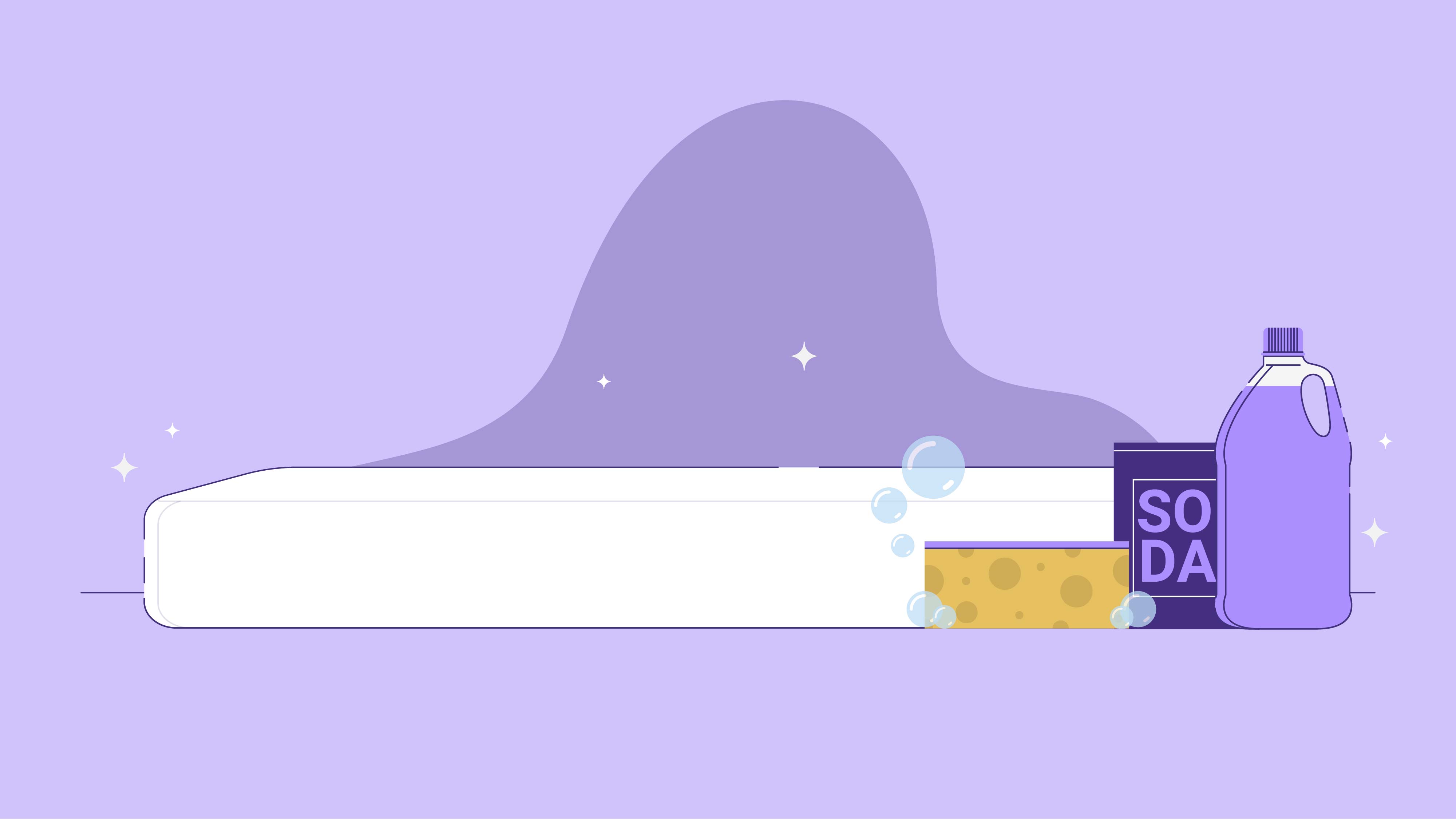
Best Ways to Deodorize Your Mattress

Have you started noticing a musty smell coming from your mattress? Chances are it’s due for a spring cleaning. We spend about a third of our lives sleeping— during that time, sweat, dust mites, dead skin cells, and other allergens pile up on our beds, creating a bad odor. This build-up can also affect our breathing and may irritate allergies.
Adding a mattress pad and a mattress protector can help extend the life of your bed, but when that isn’t enough to keep out smells, you can neutralize your mattress using a variety of methods.
We’ve researched dozens of ways to deodorize a mattress, and came up with our top favorites.
How to Deodorize Your Mattress
Before trying one of the following methods, always vacuum your mattress after removing all bedding (even a bed skirt if you have one). Vacuuming will remove a large portion of any allergen or dust buildup, maintaining a pristine surface for a hypoallergenic mattress.
Using the upholstery attachment of your vacuum cleaner, vacuum all around the mattress. Pay close attention to seams and crevices where dust mites, dead skin, and dirt can accumulate, running the upholstery brush over every crack that you can.
Time for a new bed? Read our guide on finding the best mattress for your particular needs.
Also, if you’re using any form of liquid to clean your mattress, use as little as possible. Liquid may damage the inner materials of a mattress, and if not allowed to air dry, it will create a perfect environment for mold and mildew to grow.
Water and Distilled Vinegar
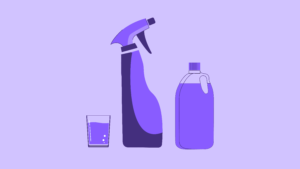 A water and vinegar solution is a great natural cleaner to use in place of chemical mattress cleaners. Mix equal parts water and distilled vinegar in a spray bottle. Then lightly spray the surface of the mattress until damp, but not saturated.
A water and vinegar solution is a great natural cleaner to use in place of chemical mattress cleaners. Mix equal parts water and distilled vinegar in a spray bottle. Then lightly spray the surface of the mattress until damp, but not saturated.
Air dry completely before flipping over to spray the other side. Make sure the mattress is dry before use to avoid mildew and mold growth.
Baking Soda
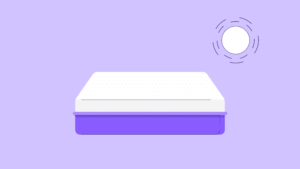 Sprinkling baking soda works wonderfully to neutralize odors, even on a mattress cover. Using a mesh sifter, evenly distribute baking soda over the surface of the mattress— use as much as you need. Let it set for 30 minutes, although the longer it sets, the better. You can leave it up to 24 hours.
Sprinkling baking soda works wonderfully to neutralize odors, even on a mattress cover. Using a mesh sifter, evenly distribute baking soda over the surface of the mattress— use as much as you need. Let it set for 30 minutes, although the longer it sets, the better. You can leave it up to 24 hours.
While it sets, try to expose the bed to natural sunlight— the sun helps to further deodorize your mattress by absorbing any moisture. After the allotted time, use the upholstery attachment to remove the baking soda.
Interested in the benefits of memory foam? Read our other guide comparing the top-rated memory foam mattresses sold today.
Essential Oils
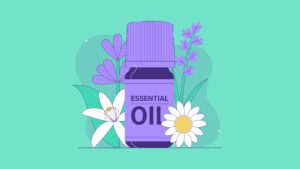
Measure out some baking soda and mix it with 15-20 drops of your favorite essential oil, then sift over the mattress. We recommend peppermint, lavender, lemon, or eucalyptus.
Baking Soda and Vinegar
No, do not mix these two together as that will negate their effects. Instead, use vinegar and baking soda separately and successively, so you can take full advantage of their potential.
After vacuuming the mattress, combine equal parts water and distilled white vinegar in a spray bottle. Lightly spray the mattress surface until damp, air dry, then flip over to do the other side.
After the bed is completely dry, cover the surface with a thin coat of baking soda and let it set overnight. The next day, vacuum the mattress with the upholstery attachment, then repeat the baking soda process on the other side.
Cornstarch
 Cornstarch is a good way to remove fresh stains. Sprinkle cornstarch over the stain, then sprinkle that with a few drops of water. Wait 5 minutes before removing the cornstarch and blot the spot with a paper towel.
Cornstarch is a good way to remove fresh stains. Sprinkle cornstarch over the stain, then sprinkle that with a few drops of water. Wait 5 minutes before removing the cornstarch and blot the spot with a paper towel.
You can also combine the power of cornstarch with baking soda. To deodorize, sprinkle both cornstarch and baking soda over the entire mattress. Cornstarch absorbs body oils, while baking soda removes odors. Let it set for a day before vacuuming with the upholstery attachment.
Other Cleaning Methods
While we can’t rip open our beds to remove and clean the inner materials, there are other methods to keep your mattress clean, and even expand its lifespan. The following are a few of our favorite, eco-friendly cleaning methods.
Spot Clean and Stain Removal
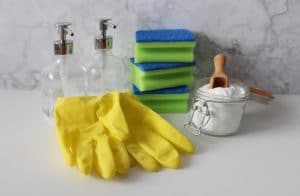
Liquids are the most common cause of stains. It’s best to take care of a stain as soon as possible— the longer it stays, the more it sets in. Blot the stain with a microfiber cloth and cold water. Avoid warm or hot water to prevent setting the stain. Blot out remaining moisture with a dry cloth, using a pressing motion to lift the stain out. Avoid circular motions that can further set the stain.
Create a paste using equal parts salt, baking soda, and distilled white vinegar. Rub the paste into the stained area and leave for 30 minutes. Brush the paste off, then remove residue with a cold, wet cloth. Let air dry.
For extra stubborn stains, try this DIY stain remover: mix two parts hydrogen peroxide with one part dish soap. Apply the solution to the stained area and gently brush with a toothbrush. Leave for 5 minutes, then wipe the area with a cool, damp cloth.
Clean Your Mattress Regularly
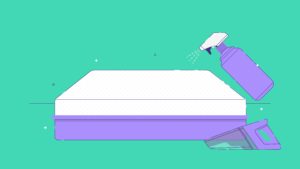 The best way to prevent odor from building up in your mattress is by keeping it clean. Vacuum the surface and sides every 6 months to remove dust and dead skin cells. Spot clean any stains you find and clean your bedding regularly. It may help to extend the life of your mattress.
The best way to prevent odor from building up in your mattress is by keeping it clean. Vacuum the surface and sides every 6 months to remove dust and dead skin cells. Spot clean any stains you find and clean your bedding regularly. It may help to extend the life of your mattress.
Struggle with pesky pain points? While a new mattress helps, they only offer a fraction of the benefits top-rated adjustable beds can provide. Read our guide to learn more.
Wash Bedding Regularly
 Bedding helps keep your mattress fresh. However, sweat, dead skin, and dirt transfers from our bodies onto our bedding. If we don’t regularly clean our bedding, this debris can build up and create a worse problem. To avoid this, wash your bed sheets every 1 to 2 weeks and follow the care instructions for blankets, duvets, and comforters.
Bedding helps keep your mattress fresh. However, sweat, dead skin, and dirt transfers from our bodies onto our bedding. If we don’t regularly clean our bedding, this debris can build up and create a worse problem. To avoid this, wash your bed sheets every 1 to 2 weeks and follow the care instructions for blankets, duvets, and comforters.
For a deeper clean, wash the bedsheets on the highest allowable temperature setting, then tumble dry for at least 30 minutes. This will kill dust mites and other bacteria that may be lurking in your bedding.
Understand the Dangers of Mold and Mildew
The danger of a damp mattress is that it can allow latent mold spores to flourish and grow. This is why it’s so important to minimize your use of liquid cleaners, from water mixed with gentle laundry detergent to vinegar or enzyme cleaners.
Mold and mildew can only be removed on the surface of a mattress, not in deeper sections of the bed. If you do have mold inside your bed, you may be able to tell by the mattress smell. Mold smells musty and stale, and people with allergy sensitivities may find themselves coughing and wheezing.
Even professional deep cleaning can’t remove mold and mildew once it’s infiltrated the inner layers of your bed. Cleaning may reduce the speed of growth, but it won’t stop it.
The best solution is to replace the mattress. Don’t risk your health if you suspect some type of mold or mildew growth inside your mattress.
Do You Need to Clean Your Box Springs?
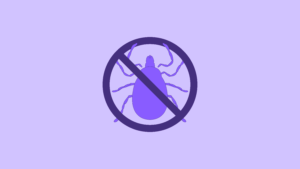 Box springs are an extension of your mattress and should be cleaned every 3 months. Box springs, like mattresses, can acquire dust mites and bed bugs if not properly maintained.
Box springs are an extension of your mattress and should be cleaned every 3 months. Box springs, like mattresses, can acquire dust mites and bed bugs if not properly maintained.
To clean a box spring, remove the mattress and vacuum the entire surface with the upholstery attachment. Then lift the box spring and prop it against a wall, allowing any loose dust to fall to the bottom. Vacuum the floor around that area. Spot clean any stains on the box spring before allowing it to air dry.
Always Use a Mattress Protector
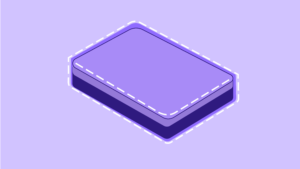 The best way to protect your mattress is by using a high-quality mattress protector. It’s a cheap, easy to apply method that’s worked for years. Waterproof mattress protectors prevent liquids and stains from reaching the mattress. Plus, buying and maintaining a mattress protector is easier and less expensive than replacing a mattress. Mattress protectors can even extend the life of your mattress.
The best way to protect your mattress is by using a high-quality mattress protector. It’s a cheap, easy to apply method that’s worked for years. Waterproof mattress protectors prevent liquids and stains from reaching the mattress. Plus, buying and maintaining a mattress protector is easier and less expensive than replacing a mattress. Mattress protectors can even extend the life of your mattress.
To get the most comfortable sleep and wake up every morning pain-free, read our guide on finding the best mattress for lower back pain.
Frequently Asked Questions
How do you prevent mattress fungus and mold?
Mold thrives in a damp and warm environment, so it’s important to make sure your bedroom isn’t wet and warm. If necessary, a dehumidifier and an air purifier can keep your bedroom’s air clean and dry. Keeping air flowing in the bedroom is also essential, as it enables swift moisture and heat dissipation. Some sleepers may even enjoy sleeping with a fan on at night.
Mold growth is also one of the strongest reasons we recommend against keeping a mattress on the floor. If you do place a mattress on the floor, lift it up and lean it against the wall periodically to help any built-up moisture escape.
Can I leave baking soda on my mattress?
Yes, as a dry material, you can leave baking soda unattended for hours. Many mattress owners leave baking soda on their bed for a full day to soak up any acids or oils, lingering moisture, and smells, and some combine baking soda with cornstarch for added efficiency. When you’re satisfied the baking soda has done its work, vacuum it all up and re-dress the mattress with bedding.
What should you not use to clean a mattress?
You should avoid directly dousing your mattress with liquid cleaners, as this can compromise the material’s structure and even allow mold spores to flourish. This is why dry baking soda mixed with cornstarch is one of our favorite ways to freshen up a mattress.
If you do use liquid cleaners on your mattress, it’s smart to pour it into a spray bottle to avoid overuse and carefully blot away the cleaner when you’re done. Make sure you don’t place bedding back on the mattress until it’s thoroughly dry.
How do you deodorize your mattress quickly?
While baking soda is one of the best ways to freshen up a mattress, it’s not necessarily the quickest. The baking soda need to be left alone for at least 30 minutes, and for best results often requires you leave it alone for a day.
Custom liquid cleaners where you mix water with vinegar or a mild detergent are often quicker ways as you leave the solution alone for about 10 to 15 minutes. However, you also have to account for how long it takes for the mattress to dry, which can vary wildly depending on your local climate.
How can I disinfect and make my mattress bacteria free?
Baking soda is a natural disinfectant and as it’s a dry material, it won’t incur the risk of mold growth like liquid cleaners would. Sprinkle baking soda on the mattress surface and leave it alone for 30 minutes at least, ideally for a few hours, then vacuum up the remaining baking soda.
You can also mix equal parts hydrogen peroxide with water to create a custom cleaning solution, using a spray bottle to lightly mist the solution onto the mattress surface. Leave the surface alone for 10 minutes, then blot it up the lingering cleaner and let the mattress air dry completely.
Is Your Mattress Clean?
Regularly cleaning and deodorizing your mattress is key to keeping your sleeping space hygienic and giving you a better night’s sleep. Not only will you extend the life of your current mattress and save yourself some money, but you’ll also improve your health by removing pesky allergens and other bacteria.
Now that you know how to deodorize your mattress, check out how you can get rid of bed bugs.
